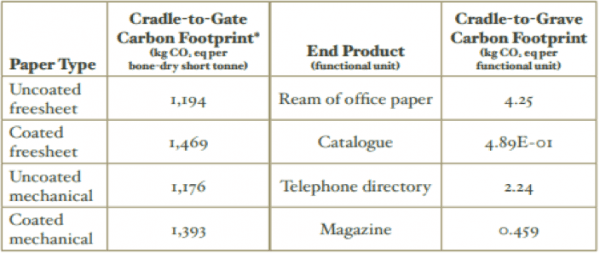
‘Change is a need, change is a chaos, change is inevitable’
Value goes beyond financial returns to include creating a positive impact on society, our clients, and our employees. One of the aspects of this vision is sustainability. The first worldwide definition of sustainability was from United Nations Brundtland Commission 1987 which defined sustainability as “meeting the needs of the present without compromising the ability of future generations to meet their own need.” This definition is being evermore implemented into sustainable goals by individuals, public agencies, and businesses worldwide.
Sustainability can be defined from different spectrum and is interrelated with environmental, social, economic and human aspects. It might be a change in the policy level or change in the type of operation one does or it might be related to consumptions and emissions or it might be a change in the energy use or it might include socio-economic aspect of a society or it might be about self-sustaining a project; it exists in different forms. A small change can have an enormous ripple effect. As Neil Armstrong said, “A small step for a man, a giant leap for mankind”, we believe such practices will help us achieve the goals of sustainability through these small steps. Such change in an operation practice is ‘Paperless Approach’ and ‘Water Fountain.’
‘Paperless approach’
What is a Paperless Approach? We can define paperless approach as the process of transforming any processes conducted using papers to electronic digital files. It simply means, any paper forms previously used for task such as inspections, work orders, or patrols are being transformed from traditional pen and paper to digitalization. This elimination of the paper form not only helps improve quality control and provides more efficient workflows, it is more sustainable and reduces our carbon footprint.
A question arises, how much carbon footprints we are saving from this approach? The National Council for Air and Stream Improvement, Inc ( NCASI) conducted a Life Cycle Assessment (LCA) from the data collected from 72 mills in the U.S and Canada, representing 77 percent of North American capacity for printing and writing papers for the year 2006-2007, published in the Journal of American Forest and Paper Association. The LCA was conducted in conformance with the ISO 14040 series of standards for LCA and received validation by a third-party critical review panel.
 Carbon Footprint for Printing and Writing Papers (NCASI)
Carbon Footprint for Printing and Writing Papers (NCASI)
The LCA from NCASI shows 4.25 kg CO2 produced for a ream of office paper we use in our office. This value holds true from the inception of raw materials to decomposition of that piece of paper. Considering that our Denver Project previously used approximately 30 reams of paper for forms each year, this can really add up. For context, consider that an average passenger vehicle emits 4.8 metric tons of CO2 per year (Source: EPA), we have essentially taken the equivalent 1.5 week of a vehicle’s emissions (About 127.5 kg CO2) out of the ecosystem per year. Now if compare and corelate same data with other projects, say 10 projects; we have removed a significant amount of CO2 per year, about 15 weeks of an average vehicle emissions, from the change in our practices. While it’s a small step, I’m proud to be a part of that!
‘Water Fountain’
The mid-sized stainless-steel coloured water fountain lying in the corner of a breakroom or just beside the lavatory; we all have seen it, quenched our thirst, refilled our bottle or simply ignored it in our day to day activities. It generally serves its purpose of providing drinking water; many of us know a little about the environmental impact a drinking fountain can have.
With the development of technology and accessibility, it is easy to deliver the cases of water to just our doorstep or simply drive to a nearby grocery store and purchase as per the need; little do we know the difference we can make in this world with a simple use of a water fountain.
‘What is in the bottle is a superior product ‘; consumers have always been led to believe in this statement. National Resource Defense Council (NRDC) conducted a four-year study in 1999 and found loopholes in the bottled water regulations. Also, a research by 2008 Environmental Working group study found a surprising array of chemical contaminants in every bottled water brand analysed. The claim by water bottlers regarding the superiority of their product and a justification tool used by companies for use of containers made from non-renewable fossil-based resources in the name of superior product has been challenged from time to time.
Centre for Sustainable Systems, University of Michigan conducted a research on Life-Cycle Assessment of Bottled vs Tap Water systems and the results were astounding. Three systems were considered in this analysis: a) Single-Use disposable bottled water (500ml) sold in 24-packs b) Home and Office delivery (HOD) bottled water c) Municipal Tap Water. With respect to life-cycle energy, solid waste, greenhouse gas emission and water use, the municipal tap systems outperform both HOD and single-use bottled systems. Single use bottled systems consume 11-31 times more energy than tap systems. HOD systems consume 8-18% of energy relative to single-use systems, while municipal tap systems use 35-55% of HOD lifecycle energy. Greenhouse gas emissions generally correlate with energy use. From an environmental perspective, municipal tap water is the preferred drinking water system.
Next time, when we pass by the lifeless box of stainless-steel hanging or residing on our wall; do remember the amount of energy we can save or relative GHG emissions we can prevent by simply filling our water bottle from the water fountain. We have been using water fountain in our Project and contributing to the Environment, are you?





There are no comments yet